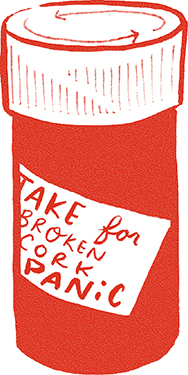
Have you experienced BCP? No, it’s not one of those acronyms that drug companies are trying to sell you a medicine for, although its impact does read like a rambling recitation of side effects, including sweaty palms, shaking, anxiety, and loss of appetite.
I’m talking about broken cork panic, an affliction that most of us have experienced when pulling out a cork. It takes hold when the cork snaps in two, causing you and your guests to fret that something is wrong with the wine. This concern, happily enough, is largely unjustified. Broken corks happen more often than people realize, occurring with regularity in bottles both simple and sublime.
The key is to realize that cork breakage is often more about the corkscrew, like when the screw is too dull or the person using it is, and we forget to maneuver the screw deep enough into the cork.
The first solution is to insert the screw into the remaining cork, going in at an angle, and to try to use the edge of the inside of the bottle as an anchor. The trick here is to screw in diagonally and slowly lever out the cork piece.
If the remaining cork breaks up in the bottle, find a mesh strainer and simply pour the wine through it, filtering out the pieces of cork into a decanter underneath the strainer. Alternatively, strain the wine through a coffee filter or cheesecloth. If you don’t get every piece, no need for BCP: cork fragments, or a pushed-in cork, do not adversely affect the taste of the wine.
To be sure, a crumbly cork can occasionally indicate that the bottle seal was compromised and the wine has become oxidized. But in most cases, a broken cork is, literally and figuratively, more bark than bite.
